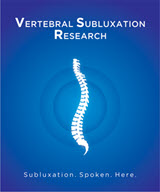New Research on Gaucher Disease in Infants

CLICK HERE to review the study
Children with Gaucher can have severe central nervous system involvement. Motor involvement is extensive, including severe weakness, hypertonia, torticollis, myoclonus, esotropia, dysphagia, and difficulty breathing. Seizures are also common.
“Research is revealing that there is a relationship between abnormalities in the spine, the nervous system, brain and even organ function” stated Dr. Matthew McCoy, a chiropractor, public health researcher and editor of the journal that published the study. “Basic science research shows that proper development and function in infants relies on proper structure and movement of the spine from an early age. This becomes even more crucial in children with genetic disorders that effect the nerve and muscular systems.”
Research has shown not only that the developing infant relies on normal structural integrity and joint movement, but that complex neurochemical communication and pathways involved in helping humans to develop normally are tied into spinal biomechanics and their related neurological pathways.
“We are now seeing more and more basic science and clinical research showing the relationship between abnormal spinal function and the management of all types of childhood disorders” McCoy added. In children with genetic disorders the situation becomes more challenging due to limitations secondary to genetic expression.
According to McCoy, “Researchers believe that the nervous system has the ability to modulate genetic expression and certainly what chiropractors do can effect nerve, muscle and organ function leading to improvement in symptoms.”
The infant report on in the study was 8-months-old with a medical diagnosis of neuronopathic Gaucher disease. He was diagnosed by a geneticist at 3-months of age. His mother stated that he had been constantly sick and rated his discomfort as 8-10 on the Visual Analog Scale (VAS) with 10 being inconsolable. He has experienced fever, excessive pulmonary secretions, difficulty breathing, vomiting after feedings, diarrhea with creamy green stools, and has been told that he is in the Failure to Thrive (FTT) category. His mother noted that his head had been in constant extension for at least two months.
The chiropractor examined the child and found abnormal posture and structural shifts in her upper neck, mid and low back. These structural shifts can lead to obstruction of the nerves and it is this obstruction, called vertebral subluxations, that chiropractors correct. The infant was unable to flex his head at all. He had right eye esotropia (crossed eye) and weakness in the arms and legs.
Following 10 weeks of chiropractic care the infant became visibly more active, had more control over his body and his torticollis reduced. Cervical range of motion increased, he was able to move his arms, knees and hips and was able to support himself on his forearms after seven visits. His breathing, right eye motor function, facial expressiveness and tongue movement improved.
The authors of the study call for more research on the role of chiropractic care in these types of genetic disorders.
Contact Information:
Matthew McCoy DC, MPH
Journal of Pediatric, Maternal & Family Health – Chiropractic
http://www.chiropracticpediatricresearch.net
drmatthewmccoy@gmail.com
Blogs
- The Chiropractic Cartel: A Look Back at Bias in Accreditation and its Imact on Today's Profession
- Inside Montana's Chiropractic Monopoly: ACA & MCA's Brazen Board Takeover
- Concerns Grow About Control of the NY State Chiropractic Board by the ACA - Use of X-ray in NY Under Threat
- Reproductive Health Information and Chiropractic Care: Navigating New Privacy Regulations
- Navigating Substance Use Disorder (SUD) Consent: What Chiropractors Need to Know













